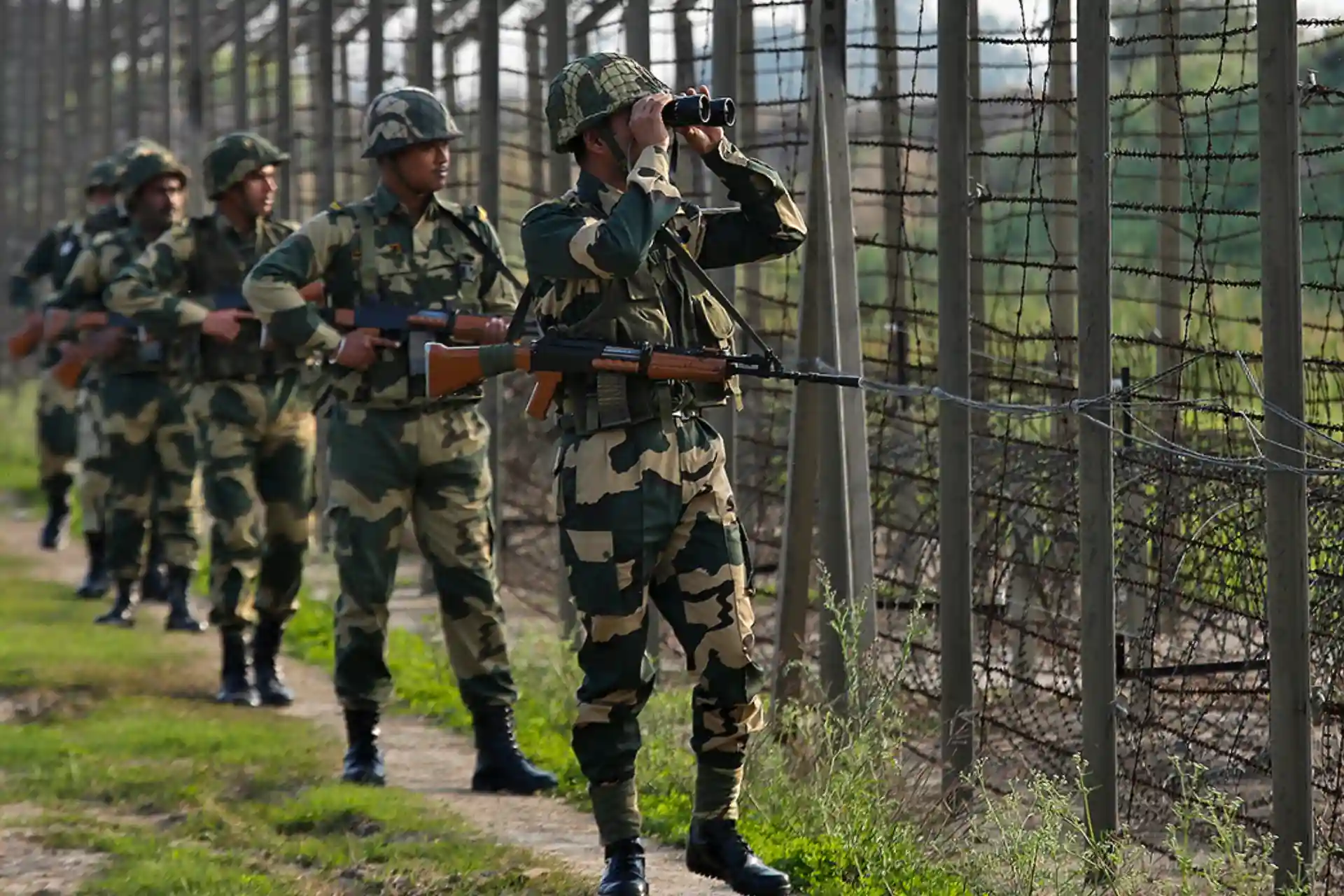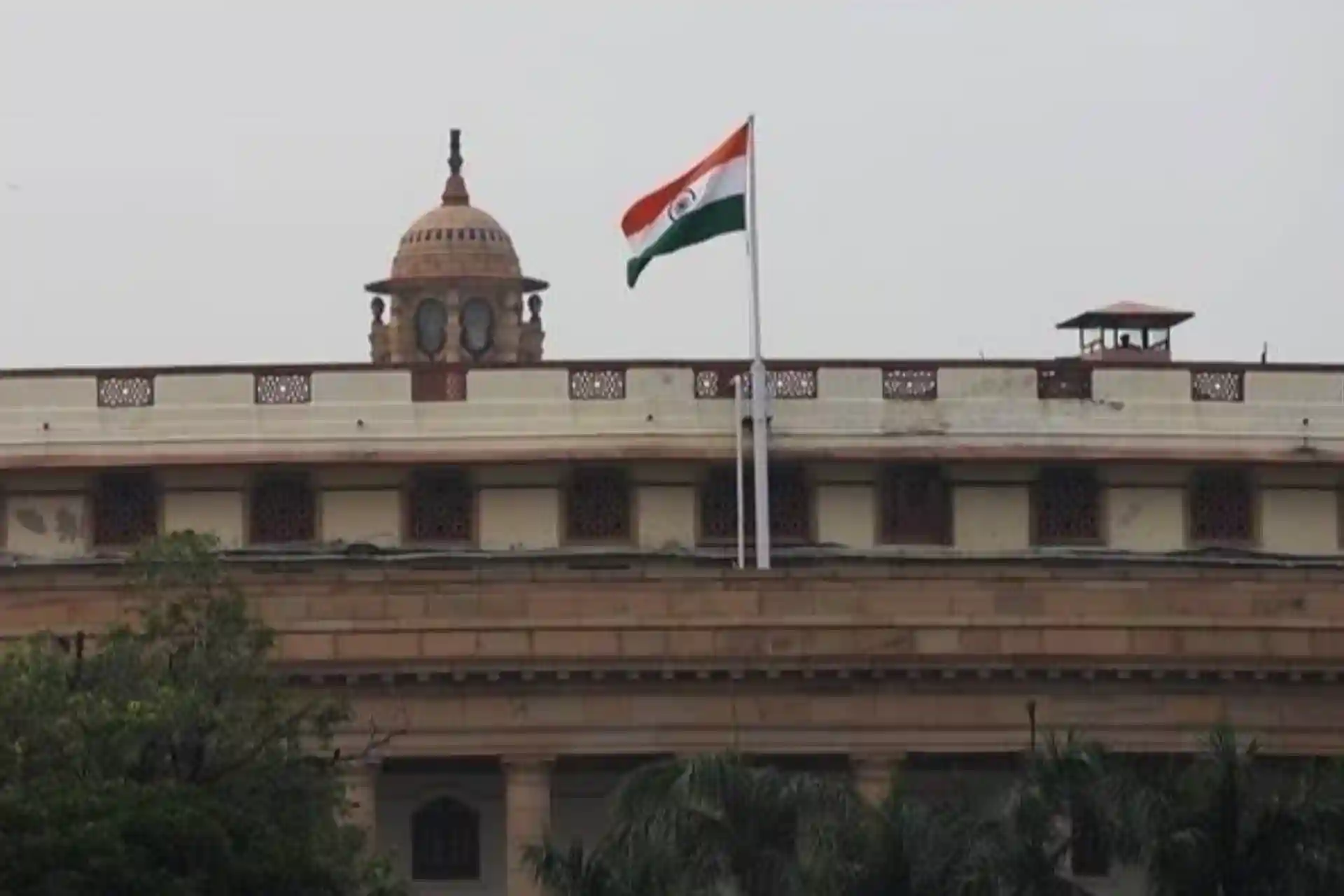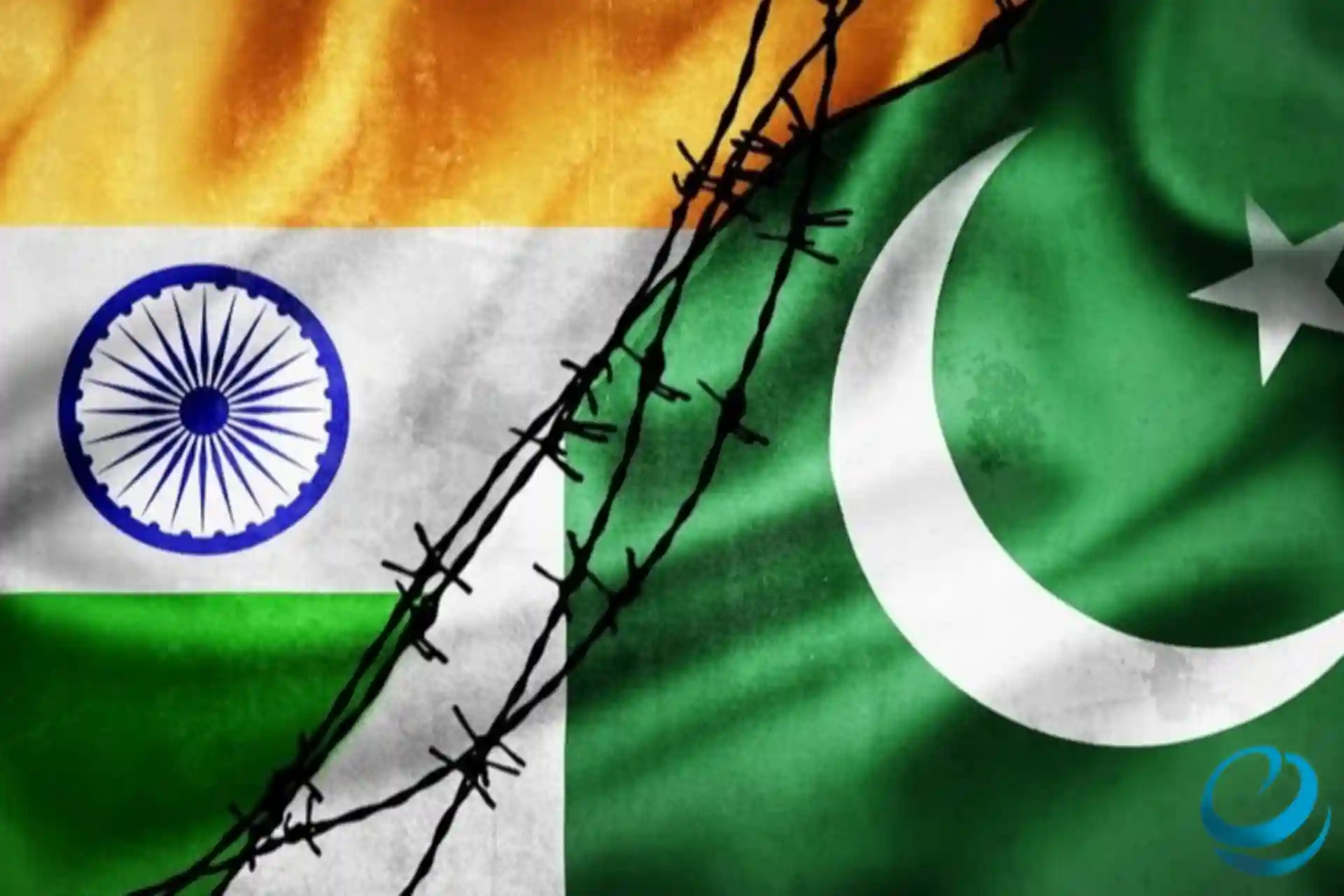02.05.2025 17:30
1097
India and Pakistan: the situation is getting tense! Nuclear war is imminent...(is it?)
The international community and expert circles have been trying hard for a week to study the causes of this time's Kashmir conflict. So, who is interested in the escalation of Pakistan-India problems? Of course, there are centers and reasons that are interested in this...
For more than 70 years, the Kashmir issue, which arose after Pakistan's secession from India, has remained unresolved. Kashmir, surrounded by snow-capped mountains, is described as a "paradise" between Buddhist India and Islamic Pakistan. But in the past 20 years, conflicts over the territory have claimed the lives of more than 40,000 people on both sides.
India accuses Islamabad of supporting separatist militants, while Pakistan accuses Indian forces of pressuring Muslims in Kashmir, causing public discontent.
The root of the conflict
In 1947, during the partition of British India, predominantly Muslim Kashmir (now more than 60 percent of the 12 million people in the Indian part of the territory are Muslims) was supposed to go to Muslim Pakistan. However, at that time, the Indian Maharaja of Kashmir and Jammu was ruled by Hari Singh. The Maharaja wanted his kingdom to be integrated into India, but the majority of Muslims opposed this decision. This led to armed conflict, in which Kashmiri tribal groups, supported by the Pakistani army, captured about a third of the Maharaja's kingdom. This part of the territory is still under Pakistani control, and the front line became the so-called "line of control", a de facto border, de jure a line that neither side recognizes.
It is worth noting that at the same time, the issue of who owns the former princely state of Jammu and Kashmir in whole or in part is also a source of controversy, albeit to a lesser extent, from China. That is, 86 thousand square kilometers of Kashmir are controlled by Pakistan, and 130 thousand square kilometers by India. In turn, China also occupies a sparsely populated but strategically important territory - Aksai Chin and high mountainous areas.
In 1965, another war broke out between India and Pakistan over Kashmir, which claimed the lives of about seven thousand people, involved the largest clash of armored vehicles since World War II, knocked out hundreds of tanks, and shot down dozens of aircraft. Incidentally, during this war, India also attacked East Pakistan. However, this bloody war ultimately ended in 1971 with the emergence of another independent state on the world map - the People's Republic of Bangladesh.
In 1999, a smaller-scale "Kargil War" took place. It involved two months of fighting over the Kargil region of Kashmir. In February of that year, tensions rose again after an attack on an Indian military convoy in Kashmir. Pakistan and India shot down one aircraft each.
The recent terrorist attack on tourists in Kashmir has sparked a new, but more serious, conflict. At the same time, New Delhi's harsh response to the attack on tourists is clearly excessive, since the level of military and police security in the areas is very high, and it is clear that the terrorist group will not be able to get through the checkpoints. By the way, similar incidents in 2016 - when 17 Indian soldiers were killed, and in 2019, when 47 were killed - did not escalate relations to such an extent, despite the larger scale of the attacks. This time, Delhi again strongly emphasized that Pakistan was behind the attack. At the same time, it is also denying Islamabad's call for an independent international investigation. In fact, the Indian government itself may be behind the terrorist attack. It is not unlikely that New Delhi is planning to revoke the autonomous status of Kashmir under this pretext.
Because both of these countries have nuclear weapons!
Is there a solution?
As for the UN position on the Kashmir issue, it is clear that its fate should be decided by a referendum. However, it has not been determined how it should be held. Pakistan envisages a direct transfer of the situation in all territories “as is”, while India’s demands are different – first, the transfer of Azad Kashmir and Gilgit Baltistan to Indian jurisdiction, and then a referendum. The worrying factor today is that, according to the amendments made to Article 370 of the Indian Constitution in 2019, Hindus from any part of the country have the opportunity to buy land and live in Kashmir. Currently, the number of such immigrants is about 85 thousand. This could be beneficial for Hindus in the future and seriously affect the results of the referendum against Muslim Kashmiris. Therefore, the first assumption is that the Constitutional amendments aimed at changing the ethno-confessional image of Kashmir caused the terrorist attack.
Incidentally, Pakistan recognizes the Kashmir issue as international and demands that it be resolved as such; India considers it an internal matter between the two countries and fears external intervention.
Returning to the escalation, New Delhi's main threat is the possibility of revising the provisions of the 1960 Water Treaty, which regulates the distribution of the waters of the Indus River Basin.
Thus, in addition to reducing the flow of water to Pakistan and threatening it with artificial floods, India will also gain the opportunity to improve the irrigation conditions of its territories: first of all, in Kashmir and Punjab. Providing more water to the lands of Punjab, which are mainly specialized in agriculture, is another tool for Amritsar's loyalty to New Delhi. Therefore, India is seeking to build additional irrigation facilities on the Indus River and its tributaries. It may limit the supply of water to Pakistan.
However, in 1960, a "water agreement" was concluded between Pakistan and India through rather complicated negotiations, according to which Pakistan uses three tributaries of the Indus River. This agreement has always been respected, but now New Delhi has stopped its participation in it. For Pakistan, this is a matter of life and death, because it is used to generate electricity and irrigate agriculture. Therefore, regional experts are pessimistic about a possible conflict between India and Pakistan. India understands the importance of the water factor well, and what drought is could be seen in the example of Syria, where it was the water factor that became the catalyst for the civil war. Therefore, it makes no practical sense for Pakistan to complicate the Kashmir issue with India. Because Islamabad is well aware that it may be left without water. If we also take into account the complex economic situation, the situation becomes even clearer. Another aspect of the issue is that Indian Prime Minister Narendra Modi's nationalist policies and oppression of Muslims have significantly damaged the reputation of his ruling Bharatiya Janata Party. The fact that he received slightly fewer votes in the last parliamentary elections than in previous ones is prompting Modi to take measures. He is trying to attract voters under the pretext of security.
Meanwhile, a number of experts are talking about Beijing's role in provoking the conflict in order to drag India into war. In fact, relations between Beijing and New Delhi are being restored after the BRICS summit in Kazan. But China's interests in Pakistan are ambitious. Here, it is trying to give a second life to the CPEC project, part of which passes through Gilgit-Baltistan (a potential area of military action). Despite New Delhi's attempts to defuse the situation in Balochistan, the Chinese practically do not allow excessive provocations in their economic zone. The main thing is that a blow to the SCO unity in the year of China's chairmanship will lead to significant reputational losses both for Beijing itself and, indirectly, for Moscow. Another category of experts recalled the visit of US Vice President Gee Dee Vance, which coincided with the terrorist attack. Vance discussed the issue of military supplies to Delhi and the relocation of American companies and a number of manufacturing plants from China to India. In this context, there are suspicions that China is involved in the Kashmiri terrorist attack. It is not unlikely that Beijing sent a message to investors that India is not peaceful. Russia also joined the unpleasant situation. Narendra Modi was expected to visit Moscow on May 9 to celebrate Victory Day, and Vladimir Putin is also scheduled to visit India later. Incidentally, a convenient precedent was created for Modi not to visit Russia. Due to the escalation of the situation in Kashmir on the eve of Victory Day, Modi found a way to cancel his visit to Moscow.
Another thought. In the international context, the conflict reflects a broader transformation of the global balance of power. The aggressive foreign policy of the United States towards China under the Trump administration is also provoking actions in other regions. India, which is moving closer to Washington, can count on American support in the event of an open conflict, while Pakistan is strengthening ties with Beijing, primarily in the areas of trade and military technology.
The Iranian factor
The Iranian factor is also being discussed here. Iran was one of the countries that offered its assistance in the investigation at a very short notice. But it itself was hit: the Shahid Rajaei container complex in the port of Bandar Abbas, which is important for the North-South transport corridor, exploded (or was blown up), while Chabahar, which India uses, was not damaged. In fact, Tehran does not need a conflict either. The country is seeking to strengthen relations with India and Russia, normalize relations with the United States, and prevent a possible confrontation with Israel.
Nuclear war for water
Scientists believe that the first nuclear war on the planet will be over water, and it may not be between Russia and the United States, but between India and Pakistan. The UN Institute for Water Resources, Environment and Health in Hamilton, Canada, says that the lack of drinking water in the Indian subcontinent is a very serious problem. They believe that the Indus River basin is a water "bomb" that can explode at any time.
If India and Pakistan were to launch a nuclear attack on each other (each side has 170 nuclear missiles), and each side fired 50 missiles, the explosion, resulting fires, and radiation would kill at least 20 million people in the first week of the war. This is certainly a horror. Fewer people died in World War I. But the destructive power of atomic bombs does not end there: fires, nuclear explosions, and radioactive particles would fall into the stratosphere. According to estimates, a nuclear conflict between India and Pakistan would release 5-6 million tons of radioactive material into the upper atmosphere; the soot would block sunlight and significantly lower the average annual temperature on the Earth's surface. The cooling of the air could last for decades. The world's current grain reserves would only be able to meet the total global demand for about 100 days. Once the reserves are depleted, a nuclear winter caused by a nuclear war between India and Pakistan would starve nearly a third of the planet's population. That's two billion people.
But I am not sure that there will be a big war at all - there probably will not be any big war. As events show, the situation on the borders will become tense, both sides will shoot "somewhere", no one will conduct real combat operations. It is highly likely that the conflict will remain at this level. At most - short-term combat operations on the border. I would estimate the possibility of turning into a big war at 10-20%. In any case, the number of forces and actors interested in the escalation of the situation in Kashmir is clearly more than two: India and Pakistan are directly involved.
If Delhi and Islamabad fail to rein in their ambitions, this conflict could escalate to unprecedented levels.
Abduvali Soyibnazarov,
political scientist
For more than 70 years, the Kashmir issue, which arose after Pakistan's secession from India, has remained unresolved. Kashmir, surrounded by snow-capped mountains, is described as a "paradise" between Buddhist India and Islamic Pakistan. But in the past 20 years, conflicts over the territory have claimed the lives of more than 40,000 people on both sides.
India accuses Islamabad of supporting separatist militants, while Pakistan accuses Indian forces of pressuring Muslims in Kashmir, causing public discontent.
The root of the conflict
In 1947, during the partition of British India, predominantly Muslim Kashmir (now more than 60 percent of the 12 million people in the Indian part of the territory are Muslims) was supposed to go to Muslim Pakistan. However, at that time, the Indian Maharaja of Kashmir and Jammu was ruled by Hari Singh. The Maharaja wanted his kingdom to be integrated into India, but the majority of Muslims opposed this decision. This led to armed conflict, in which Kashmiri tribal groups, supported by the Pakistani army, captured about a third of the Maharaja's kingdom. This part of the territory is still under Pakistani control, and the front line became the so-called "line of control", a de facto border, de jure a line that neither side recognizes.
It is worth noting that at the same time, the issue of who owns the former princely state of Jammu and Kashmir in whole or in part is also a source of controversy, albeit to a lesser extent, from China. That is, 86 thousand square kilometers of Kashmir are controlled by Pakistan, and 130 thousand square kilometers by India. In turn, China also occupies a sparsely populated but strategically important territory - Aksai Chin and high mountainous areas.
In 1965, another war broke out between India and Pakistan over Kashmir, which claimed the lives of about seven thousand people, involved the largest clash of armored vehicles since World War II, knocked out hundreds of tanks, and shot down dozens of aircraft. Incidentally, during this war, India also attacked East Pakistan. However, this bloody war ultimately ended in 1971 with the emergence of another independent state on the world map - the People's Republic of Bangladesh.
In 1999, a smaller-scale "Kargil War" took place. It involved two months of fighting over the Kargil region of Kashmir. In February of that year, tensions rose again after an attack on an Indian military convoy in Kashmir. Pakistan and India shot down one aircraft each.
The recent terrorist attack on tourists in Kashmir has sparked a new, but more serious, conflict. At the same time, New Delhi's harsh response to the attack on tourists is clearly excessive, since the level of military and police security in the areas is very high, and it is clear that the terrorist group will not be able to get through the checkpoints. By the way, similar incidents in 2016 - when 17 Indian soldiers were killed, and in 2019, when 47 were killed - did not escalate relations to such an extent, despite the larger scale of the attacks. This time, Delhi again strongly emphasized that Pakistan was behind the attack. At the same time, it is also denying Islamabad's call for an independent international investigation. In fact, the Indian government itself may be behind the terrorist attack. It is not unlikely that New Delhi is planning to revoke the autonomous status of Kashmir under this pretext.
Because both of these countries have nuclear weapons!
Is there a solution?
As for the UN position on the Kashmir issue, it is clear that its fate should be decided by a referendum. However, it has not been determined how it should be held. Pakistan envisages a direct transfer of the situation in all territories “as is”, while India’s demands are different – first, the transfer of Azad Kashmir and Gilgit Baltistan to Indian jurisdiction, and then a referendum. The worrying factor today is that, according to the amendments made to Article 370 of the Indian Constitution in 2019, Hindus from any part of the country have the opportunity to buy land and live in Kashmir. Currently, the number of such immigrants is about 85 thousand. This could be beneficial for Hindus in the future and seriously affect the results of the referendum against Muslim Kashmiris. Therefore, the first assumption is that the Constitutional amendments aimed at changing the ethno-confessional image of Kashmir caused the terrorist attack.
Incidentally, Pakistan recognizes the Kashmir issue as international and demands that it be resolved as such; India considers it an internal matter between the two countries and fears external intervention.
Returning to the escalation, New Delhi's main threat is the possibility of revising the provisions of the 1960 Water Treaty, which regulates the distribution of the waters of the Indus River Basin.
Thus, in addition to reducing the flow of water to Pakistan and threatening it with artificial floods, India will also gain the opportunity to improve the irrigation conditions of its territories: first of all, in Kashmir and Punjab. Providing more water to the lands of Punjab, which are mainly specialized in agriculture, is another tool for Amritsar's loyalty to New Delhi. Therefore, India is seeking to build additional irrigation facilities on the Indus River and its tributaries. It may limit the supply of water to Pakistan.
However, in 1960, a "water agreement" was concluded between Pakistan and India through rather complicated negotiations, according to which Pakistan uses three tributaries of the Indus River. This agreement has always been respected, but now New Delhi has stopped its participation in it. For Pakistan, this is a matter of life and death, because it is used to generate electricity and irrigate agriculture. Therefore, regional experts are pessimistic about a possible conflict between India and Pakistan. India understands the importance of the water factor well, and what drought is could be seen in the example of Syria, where it was the water factor that became the catalyst for the civil war. Therefore, it makes no practical sense for Pakistan to complicate the Kashmir issue with India. Because Islamabad is well aware that it may be left without water. If we also take into account the complex economic situation, the situation becomes even clearer. Another aspect of the issue is that Indian Prime Minister Narendra Modi's nationalist policies and oppression of Muslims have significantly damaged the reputation of his ruling Bharatiya Janata Party. The fact that he received slightly fewer votes in the last parliamentary elections than in previous ones is prompting Modi to take measures. He is trying to attract voters under the pretext of security.
Meanwhile, a number of experts are talking about Beijing's role in provoking the conflict in order to drag India into war. In fact, relations between Beijing and New Delhi are being restored after the BRICS summit in Kazan. But China's interests in Pakistan are ambitious. Here, it is trying to give a second life to the CPEC project, part of which passes through Gilgit-Baltistan (a potential area of military action). Despite New Delhi's attempts to defuse the situation in Balochistan, the Chinese practically do not allow excessive provocations in their economic zone. The main thing is that a blow to the SCO unity in the year of China's chairmanship will lead to significant reputational losses both for Beijing itself and, indirectly, for Moscow. Another category of experts recalled the visit of US Vice President Gee Dee Vance, which coincided with the terrorist attack. Vance discussed the issue of military supplies to Delhi and the relocation of American companies and a number of manufacturing plants from China to India. In this context, there are suspicions that China is involved in the Kashmiri terrorist attack. It is not unlikely that Beijing sent a message to investors that India is not peaceful. Russia also joined the unpleasant situation. Narendra Modi was expected to visit Moscow on May 9 to celebrate Victory Day, and Vladimir Putin is also scheduled to visit India later. Incidentally, a convenient precedent was created for Modi not to visit Russia. Due to the escalation of the situation in Kashmir on the eve of Victory Day, Modi found a way to cancel his visit to Moscow.
Another thought. In the international context, the conflict reflects a broader transformation of the global balance of power. The aggressive foreign policy of the United States towards China under the Trump administration is also provoking actions in other regions. India, which is moving closer to Washington, can count on American support in the event of an open conflict, while Pakistan is strengthening ties with Beijing, primarily in the areas of trade and military technology.
The Iranian factor
The Iranian factor is also being discussed here. Iran was one of the countries that offered its assistance in the investigation at a very short notice. But it itself was hit: the Shahid Rajaei container complex in the port of Bandar Abbas, which is important for the North-South transport corridor, exploded (or was blown up), while Chabahar, which India uses, was not damaged. In fact, Tehran does not need a conflict either. The country is seeking to strengthen relations with India and Russia, normalize relations with the United States, and prevent a possible confrontation with Israel.
Nuclear war for water
Scientists believe that the first nuclear war on the planet will be over water, and it may not be between Russia and the United States, but between India and Pakistan. The UN Institute for Water Resources, Environment and Health in Hamilton, Canada, says that the lack of drinking water in the Indian subcontinent is a very serious problem. They believe that the Indus River basin is a water "bomb" that can explode at any time.
If India and Pakistan were to launch a nuclear attack on each other (each side has 170 nuclear missiles), and each side fired 50 missiles, the explosion, resulting fires, and radiation would kill at least 20 million people in the first week of the war. This is certainly a horror. Fewer people died in World War I. But the destructive power of atomic bombs does not end there: fires, nuclear explosions, and radioactive particles would fall into the stratosphere. According to estimates, a nuclear conflict between India and Pakistan would release 5-6 million tons of radioactive material into the upper atmosphere; the soot would block sunlight and significantly lower the average annual temperature on the Earth's surface. The cooling of the air could last for decades. The world's current grain reserves would only be able to meet the total global demand for about 100 days. Once the reserves are depleted, a nuclear winter caused by a nuclear war between India and Pakistan would starve nearly a third of the planet's population. That's two billion people.
But I am not sure that there will be a big war at all - there probably will not be any big war. As events show, the situation on the borders will become tense, both sides will shoot "somewhere", no one will conduct real combat operations. It is highly likely that the conflict will remain at this level. At most - short-term combat operations on the border. I would estimate the possibility of turning into a big war at 10-20%. In any case, the number of forces and actors interested in the escalation of the situation in Kashmir is clearly more than two: India and Pakistan are directly involved.
If Delhi and Islamabad fail to rein in their ambitions, this conflict could escalate to unprecedented levels.
Abduvali Soyibnazarov,
political scientist



